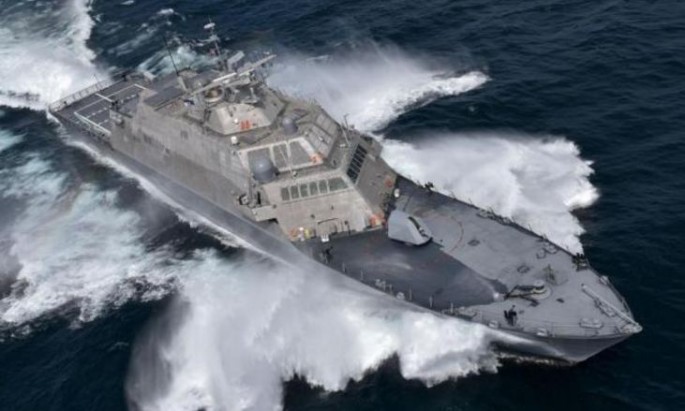The U.S. Navy has taken delivery of its seventh Littoral Combat Ship (LCS), a new warship class optimized for combat in shallow waters such as those in many areas of the South China Sea. Most of these ships will be deployed to the Asia-Pacific, currently the scene of escalating tensions with China.
The USS Detroit (LCS-7), a monohull Freedom-class LCS, will be commissioned into Navy service in late October. It's the fourth Freedom-class LCS built by Lockheed Martin.
Six Freedom-class ships are currently under construction by the Lockheed Martin-led industry team at Fincantieri Marinette Marine. Three more ships are to be built.
When it is commissioned, the USS Detroit is expected to head for Asia to become part of the United States Seventh Fleet based in Hawaii. Fully armed, the ship will carry weapons modules suitable for the missions it is given.
The LCS concept emphasizes speed, flexible mission modules and a shallow draft. It can operate in waters as shallow as four meters.
The last LCS ship commissioned, the USS Coronado (LCS-4), has been assigned to the Seventh Fleet. The ship, which joined the fleet last April, is trimaran hulled warship of the Independence-class.
The four Freedom-class LCS' in active service -- the USS Freedom (LCS-1), USS Fort Worth (LCS-3), USS Milwaukee (LCS-5) and USS Detroit (LCS-7) -- are all homeported to Naval Base San Diego.
All are assigned to patrol the Asia-Pacific. These patrols first began in 2013 with the USS Freedom, the lead ship in the Freedom-class. The USS Freedom conducted standard patrols in the South China Sea and in November 2013, delivered relief supplies to the Philippines in the wake of Typhoon Haiyan.
Organic weapons systems for the Freedom-class include one Mk 110 57 mm gun; one Mk 49 launcher with 21 × RIM-116 Rolling Airframe Missile Surface-to-Air Missiles; two 30 mm Mk44 Bushmaster II autocannon and four .50 in (12.7 mm) machine guns.
The ship can also carry either two SH-60 or MH-60 Seahawk helicopters. The ship has a stern ramp for operating small boats, and the cargo volume and payload to deliver a small assault force with fighting vehicles to a roll-on/roll-off port facility.
The ship's modular design and plug-and-play architecture provide the Navy with increased operational capacity and capability. It has 40 percent reconfigurable shipboard space for weapon modules and various upgrades.



























